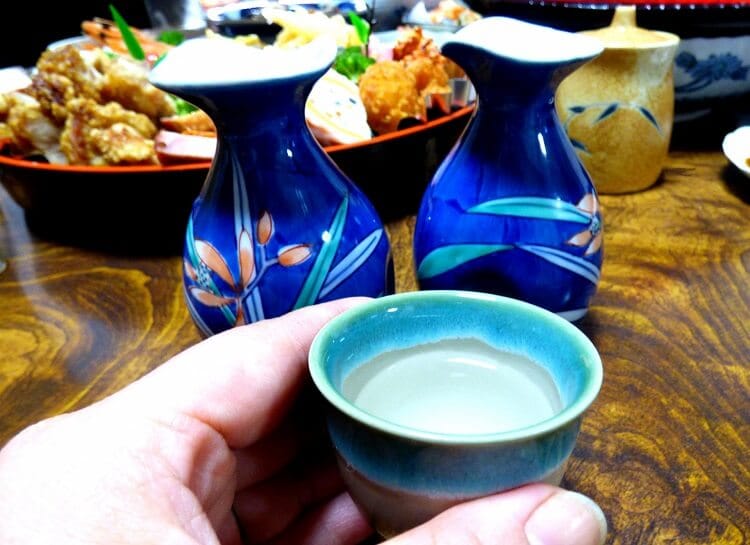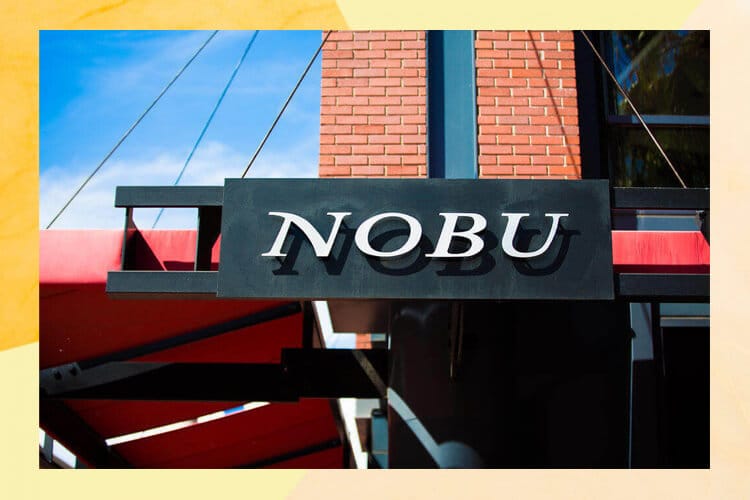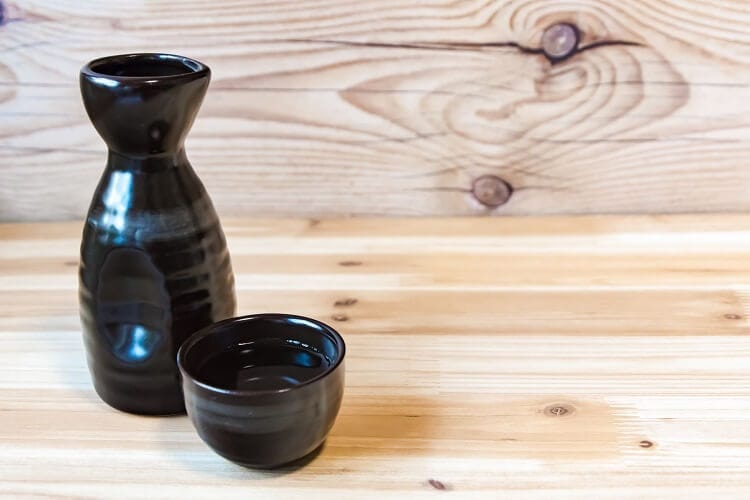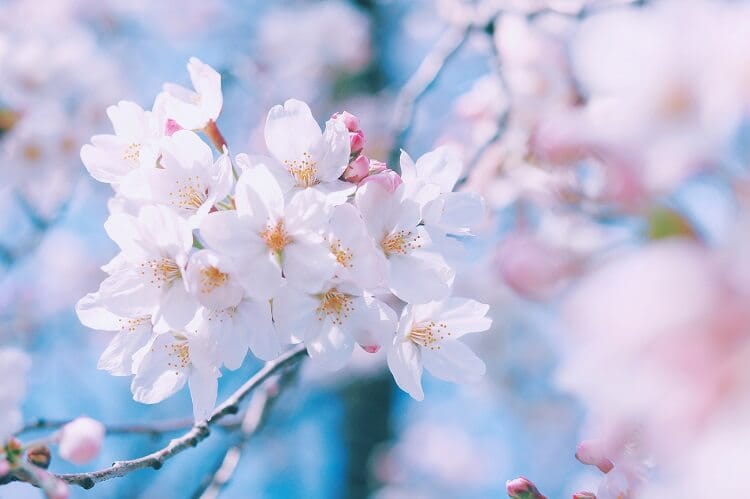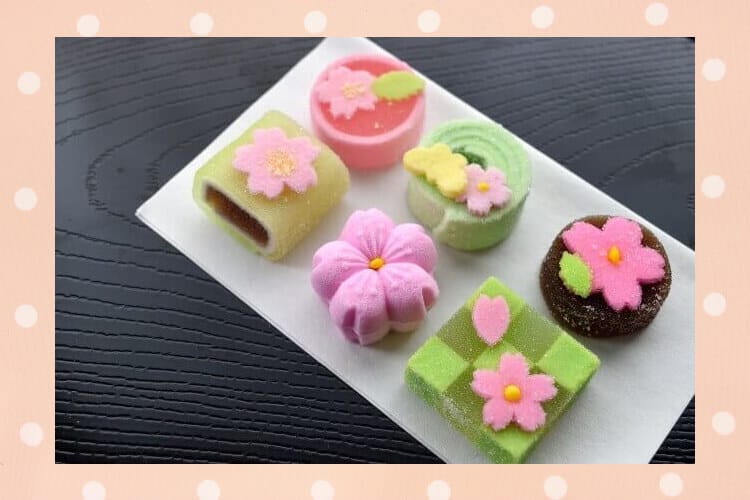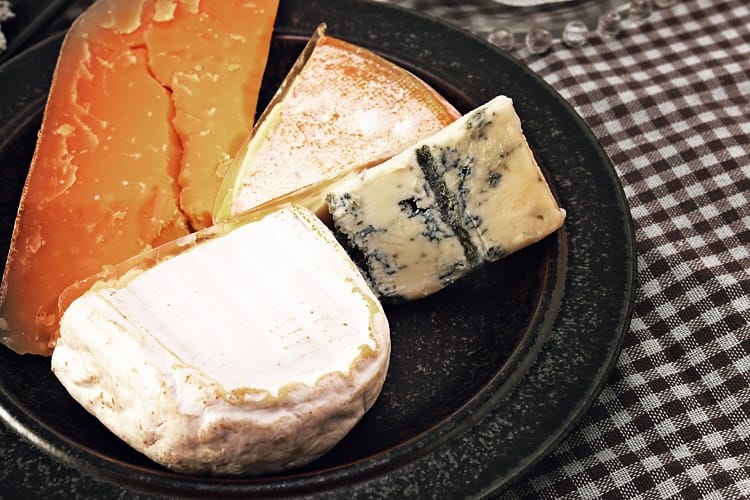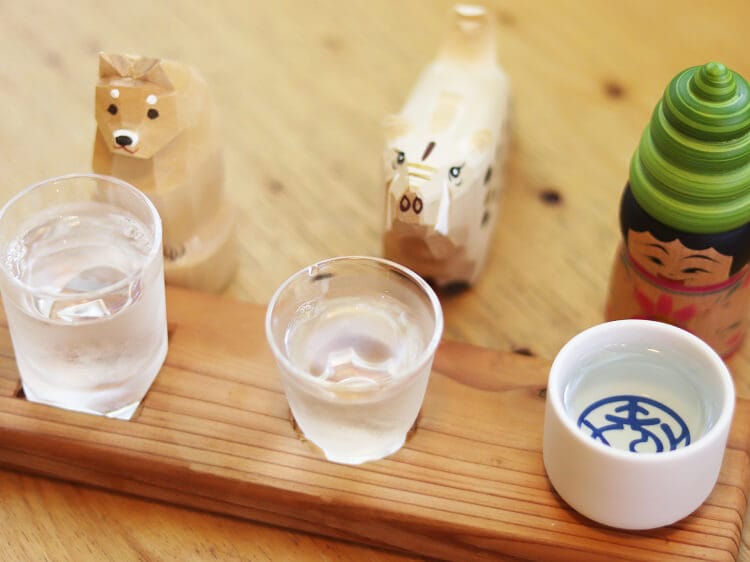
What kind of liquor do you like? People who like beer, people who like shochu, people who like highball, and the types of liquor that they like vary from person to person.
This time I will write an article about sake. As you can see, there are many types of sake such as “Pure Rice Sake” and “Daiginjo”. If you are not sure about the type of sake, you should read this article.
The types of sake are roughly divided into 16 types!
In the past, sake was classified according to the special grade, first grade, and second grade, but now it is classified according to raw materials, rice polishing rate, koji rate, alcohol addition amount, etc. As a result, the number of classifications is higher than before, and fewer people understand the types of sake.
There are many types, but there are about 5 of them, so you can enjoy Japanese sake more happily than just now. There's no need to remember everything, so just remember what you've seen and heard or just drank.
Specific name liquor
Japanese sake is roughly classified into 16 types, of which 8 types are called specific names. Specific name liquor is distinguished by liquor tax law and can be displayed as “specific name” to distinguish it from “ordinary liquor”.
Sake is basically made of rice and water, but some of them contain alcohol. Among the specific name sake, those with no added alcohol are called pure rice sake, and those with added alcohol are called Honjozo.
In the following, we will introduce the 8 types of specially named sake divided into pure rice sake and brewed sake. Since technical terms come out from here, explain the terms in advance so that you can read the article smoothly.
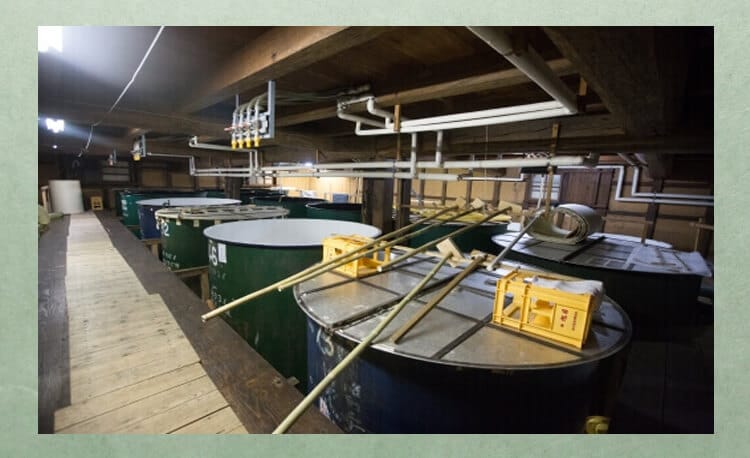
・ Rice milling rate
The polished rice ratio indicates how much weight the polished white rice has compared to the original brown rice. If you say more chewing, it is a number that shows how much rice has been shaved during the manufacturing process.
By using heart white (the center of rice), sake can be made with a tasteless finish. Therefore, the lower the rice polishing ratio, the higher the quality of sake.
・ Pure rice liquor
There are the following 4 types of pure rice wine.
・ Junmai Daiginjo Sake
Junmai Daiginjo Sake refers to those whose raw rice ratio is less than 50%. Because the rice polishing rate is low, the average price is a little high, and it has a good aroma and color.
・ Junmai Ginjo Sake
Junmai Ginjo Sake refers to those whose raw rice ratio is less than 60%. The price range is lower than Junmai Daiginjo Sake.
・ Special Junmaishu
Special pure rice liquor refers to those made using a special manufacturing method with a rice milling ratio of raw rice less than 60%. The major feature is that the quality of the sake varies depending on the type of raw material.
・ Pure rice liquor
For pure rice sake, there is no regulation based on the rice polishing rate. The raw material is water, rice bran, and water. It is an ancient Japanese liquor that is loved by many people because it is relatively inexpensive and can be obtained.
・ Main brewing sake
In addition to raw materials (rice, rice bran, water), brewed alcohol is called “brewed sake”. For brewed sake, the amount of alcohol added is determined to be less than 10% of the total weight of white rice. There are the following 4 items that are called brewed sake.
・ Daiginjo sake
Daiginjo sake refers to those whose raw rice ratio is less than 50%. The purpose of adding alcohol is to affect the yeast during fermentation and bring out the umami, so very little alcohol is added.
・ Ginjo sake
Ginjo sake refers to those whose raw rice ratio is less than 60%. As with Daiginjo, the amount of brewing alcohol added is small.
・ Special Honjozo
Special Honjo Sake refers to those whose raw rice ratio is less than 60%. Some brewing alcohol can be felt because brewing alcohol is added to increase the amount of alcohol.
・ Main brewing sake
This refers to those whose raw rice ratio is less than 70%. Speaking of the amount of alcohol for brewing, this is a brew with less than 120 liters of brewing alcohol added per ton of raw rice.
In this way, the specific name liquor is classified as 8 depending on the rice polishing rate, production method, and the presence or absence of alcohol. The lower the rice polishing rate, the higher the price, but some people may find that pure rice sake is more delicious than pure rice Daiginjo.
If you have sake at home, please check to see what type of sake it is.
Ordinary sake (general sake)
Ordinary sake is a type of sake that is not classified as a specific name sake, accounting for approximately 70% of all sake. For brewing sake, the brewing alcohol was specified as 10% or less of the raw rice, but there is no such designation for ordinary sake.
There are the following 2 types of regular sake.
・ Normal brew
The raw materials for ordinary brewed sake are the same as rice, rice bran, water, brewing alcohol and brewed sake. The difference is that the amount of alcohol used for brewing is higher than in brewing.
・ Enriched sake
Masujo Sake is a Japanese sake blended with triple brewed sake. Triple brewed sake is sake that has been tripled by adding brewing alcohol and brewing sugar at the moromi stage, and is often made in the days when rice and sugar were short after the war. It is a thing.
3 types that can be divided in the manufacturing process
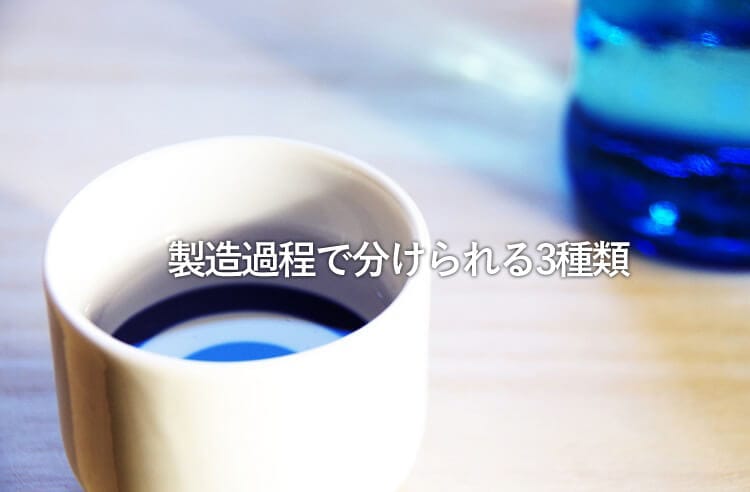
Sake is also classified by type of production. To put it simply, it is very interesting that there are different types depending on whether or not a fire is used.
In the general sake production process, the following procedure is used.
[Aperture] → [Fire] → [Storage] → [Fire] → [Completed]
With this manufacturing process in mind, let's see what is different about the following 3 types:
・ Raw storage liquor
Fresh storage liquor is made by the following process.
[Aperture] → [Storage] → [Fire] → [Completed]
If you don't put a fire between the squeeze and storage, it will be fresh storage.
・ Raw stuffed sake
Raw sake is made by the following process.
[Aperture] → [Fire] → [Storage] → [Completed]
If you do not fire after storage, it will be freshly brewed sake.
・ Natural sake (real)
Fresh sake is made by the following process.
[Aperture] → [Storage] → [Completed]
Fresh sake refers to sake that is made without burning. By not firing, you can enjoy a fresh taste and aroma, but because of the fast deterioration, you can generally drink only near the brewery.
The purpose of burning during the production of sake is to “stop enzymes” and “bacteria kill” in sake. It is said that stable sake can be made by burning, and the above-mentioned 3 types made without firing can be said to be rare sake.
3 types divided by storage period
The following 3 types are categorized by shelf life.
・ Sake
Shinshu refers to sake that has just been produced. In general, sake that has been manufactured and before being heat-treated, or sake that has only been in the second half of production, is called fresh sake.
·Old sake
Old sake is sake that has been stored for more than 1 years after production.
・ Long-term storage liquor
Long-term storage liquor is sake that has been stored for more than 3 years after production. Because it is aged for a long time, it is also called long-term aged sake. By storing for a long time, you can enjoy a unique aroma and flavor.
So far, I have briefly introduced 16 types of sake. There are some here that you won't see unless you like sake, but the flavors, flavors and flavors of 1 and 1 are different. If you are a sake lover, please look for your favorite type of sake.
■ When you classify sake by taste and aroma
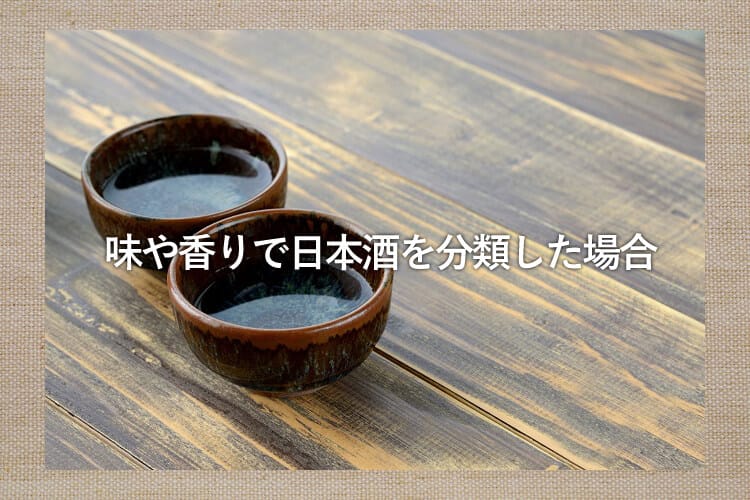
Up to this point, we have introduced 16 types of sake classified by production method and raw materials. But if you don't like sake, it's difficult to try all kinds. From here, we will introduce the types of sake classified by aroma and taste.
When you classify sake by taste and aroma, it falls into one of the following 4:
・ Sake
Sake is a Japanese sake characterized by a fruity taste. It is popular among ginjo-keis and is especially popular among young women who don't drink much.
・ Sake
Sake is a sake that is characterized by its refreshing ease of drinking. There are a lot of ordinary sake and brewed sake as refreshing sake, and it has a light and dry taste.
・ Sake
Sake is a Japanese sake characterized by the richness of rice. It is often found in pure rice-based sake and has a strong personality even in dishes with a strong taste.
・ Ripe sake
Jukushu is a Japanese sake characterized by a spicy scent and a trolley. It is often found in old and aged sake.
Sake is still sold over 1000. It is difficult to try all the stocks, so it is recommended that you find your favorite type in the above 4 and find your favorite one from there.
■ Summary

This time I have explained the types of sake. Although it is not well known, there are large 16 types of sake, each with unique characteristics in aroma and taste. Rather than just drink, you can enjoy sake many times more if you drink with the kind of sake in mind. Please try to find one of your own.

